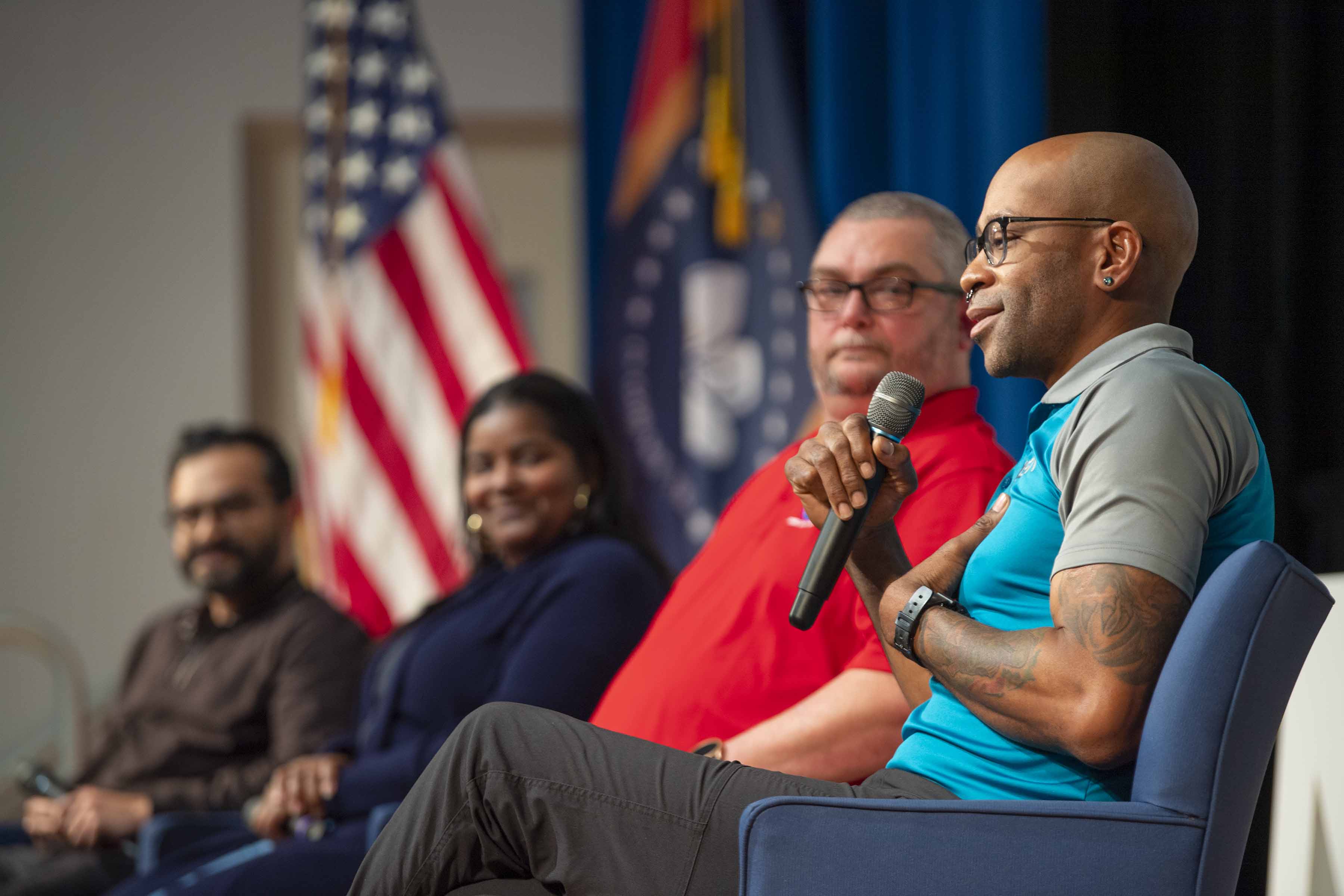Written by Beau Black at NASA's Stennis Space Center, with assistance from students at Pascagoula (Mississippi) High School, Hancock (Mississippi) Career Technical Center, and Springfield (Louisiana) High School
The questions continued to come, well beyond the allotted time, as students at NASA's Next Gen STEM event in late February explored the importance of computer science for the agency's future missions.
Students interacted, in person or online, with a panel of employees from NASA's Stennis Space Center near Bay St. Louis, Mississippi, during the agency's event on opportunities in science, technology, engineering and mathematics (STEM).
“We know from our experience and research that stories are powerful,” said Dr. Carrie Olsen, NEXT GEN STEM Project Director, in welcoming the students to the event. “It's a big part of our project to connect students with our NASA people because then you can hear their stories. Stories do so much more than just reading something, because you're connecting with another human being, you can see a little bit of yourself in them, and that might spark something.”
Students in today's classrooms are part of the Artemis generation that will contribute to future Artemis missions and every area of NASA's work to the benefit of all. As the agency lays the groundwork for long-term scientific exploration of the Moon and prepares for missions to Mars, it will take on all kinds of roles in science, technology, engineering, mathematics and other fields to meet the needs of the future.
During the February event, NASA Stennis employees who work in the fields of engineering, autonomous systems, and cybersecurity sparked the curiosity of students who joined in person from Louisiana and Mississippi, as well as online students.
“Computer science is very versatile,” said Dewayne Lavin, a control engineer at NASA. “You can go anywhere with a computer science degree, and you'll be able to find work that will take you places you didn't know you could go. I never saw myself working at NASA, and here I am.”
Lavin works with a programmable logic controller at NASA's Stennis Test Complex. He said the powerful computer performs its routine functions about 4,000 times per second during propulsion testing activities.
During the question-and-answer period following the presentations, Springfield (Louisiana) high school student Seth Spiers learned from NASA Stennis mechanical engineer Armando Delgado that a typical day could include working in the office with computer software and field work in propulsion test support, which It relates to computerized systems for performing complex tasks.
Pascagoula (Mississippi) School student Josh Davis received feedback from the panel about technical advances needed for future space exploration.
“A lot of the projects are focused on the technologies we need to mature or develop to take astronauts from the Moon to Mars — managing the health of the systems, monitoring the health of the different components of the rocket, propulsion, and where fire exits,” said Travis Martin, technical project manager for NASA’s Stennis Autonomous Systems Laboratory. “It's habitat, and anything in between.” “We definitely need to automate these things so astronauts can get on with their work doing science.”
Everyone can find their place in space and NASA, said Bonita Oliver, chief information security officer at Stennis, noting that it ultimately depends on what the student wants to do and what the student likes to do. For Oliver, math and science interested her, so she pursued computer engineering. She started at NASA as an applications developer manager and now oversees cybersecurity at NASA Stennis.
Students asked a range of questions, from the impact of artificial intelligence to the best course of action at NASA to what motivates committee members in their daily work. Participants urged students to take advantage of the opportunities available to participate in NASA activities and programs.
In a group discussion following the event, students from Springfield High School, Hancock County (Mississippi) Career Technical Center and Pascagoula High School agreed that “the future is computer science,” calling it a key piece to moving forward in spaceflight.
Immersive, curated event NASA is calling In partnership with the Next Gen STEM Project through NASA's STEM Office, it plays a critical role in helping build a diverse future workforce by engaging students in authentic learning experiences with NASA employees, content, and facilities.

“Subtly charming problem solver. Extreme tv enthusiast. Web scholar. Evil beer expert. Music nerd. Food junkie.”

